Katharine Hepburn’s very good, very bad day at Fenwick
At the close of the 20th century, the American Film Institute named Katharine Hepburn “the greatest American screen legend” among females. For sheer drama, however, no scene she ever filmed could compare with her real-life role on September 21, 1938.
Earlier that year, Hepburn was mired in a dreadful slump. A darling of the stage and silver screen, the Best Actress Oscar winner in 1933 for Morning Glory, Hepburn had lost her mojo amid a string of disappointing films. Even Bringing Up Baby, which paired Hepburn with Cary Grant and a leopard on a leash, flopped commercially. Released in mid-February 1938, it later earned multiple honors as one of cinema’s all-time comedy classics. Yet, its middling revenues at the time prompted the Independent Theater Owners of America to install Hepburn atop its “Box Office Poison” list. Not even the support and influence of her boyfriend, Howard Hughes, could stop the hemorrhaging. In June, exhausted and disillusioned, 31-year-old Katharine Hepburn retreated to her home in Fenwick, Conn.
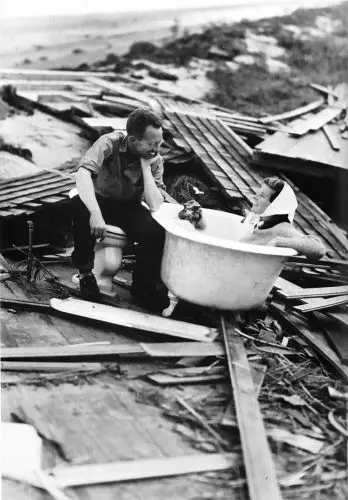
“I went to Fenwick, which was in full flower,” wrote Hepburn in her 1991 autobiography, Me: Stories of My Life. “It was June and the weather was heavenly and the golf-tennis-swimming-sailing were ever available. The family were all there and it was fun. Lots of talk. Lots of exercise. The people there were not really aware of my peculiar predicament so it was never discussed. “One day the telephone rang and it was Philip Barry in Maine: ‘I have an idea. I want to talk to you.’ “‘Fine,’ I said. ‘I’m in Fenwick. Come down any time… Good…Tomorrow will be fine…Yes, about teatime. Good.’”
Fenwick
As idyllic coastal summer colonies go, Fenwick was better than most. A borough in the postcard-perfect town of Old Saybrook, Fenwick sits at the confluence of the Connecticut River and Long Island Sound, 45 miles southeast of Hartford, where Hepburn was born and raised. A cluster of the Nutmeg State’s most prominent citizens began building cottages around 1880 and strictly controlled the growth. At no time has the permanent population ever exceeded 100. Awash in coves, causeways, jetties, shingle-style residences, and two lighthouses, Fenwick had been Hepburn’s happy place since 1913, when she was six.
A patch of that paradise consisted of a 9-hole golf course. Young Kate enjoyed an early introduction to the game, a by-product of a privileged, enlightened upbringing by her urologist father and her social activist mother, who encouraged their six children to embrace all athletic endeavors.
“Golf became sort of a specialty with me and with Bob [her younger brother by six years],” wrote Hepburn. “We went to Fenwick in the summer where there was a private nine-hole course and as very young kids we could play at any time. We began at five. When I was twelve or thirteen, Mother started me on lessons at the Hartford Golf Club. We became really quite good.”
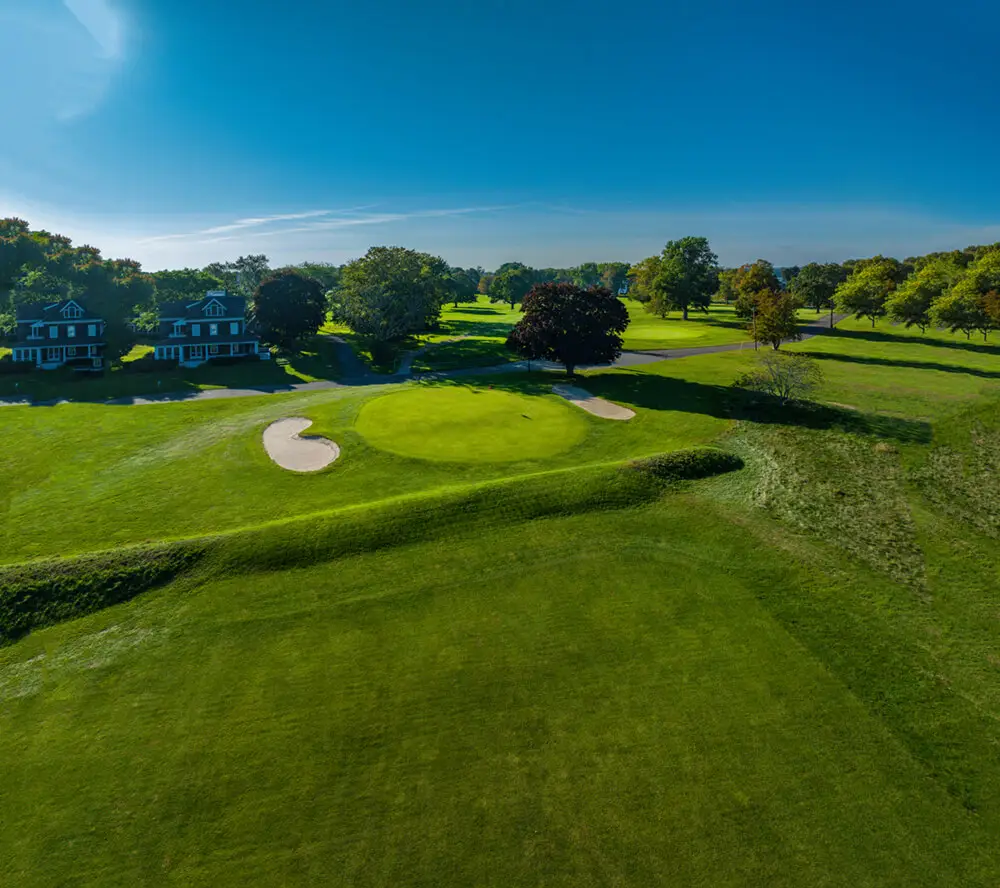
Kate definitely became quite good. Of her progress in her mid-teens, she wrote, “It looked as though I were going to develop into a pretty good player. I could hit it a mile. And I was quite accurate with irons. The only thing I just was lousy at was putting. Oh dear. I wonder now if even then my head and/or hands shook. Not so that you could see it but so that when tensed up I was sort of uneasy. Well, whatever it was, I just could not putt. Then—now—ever.”
Peter Bulkeley respectfully disagrees. I met the genial, 91-year-old scion of the prominent Bulkeley family at Fenwick’s first tee in October 2022, where he showed me the club’s Approaching and Putting Contest trophy that Hepburn captured four times. She was 16 when she first triumphed in 1923 and repeated the following year. She also won twice in the 1940s. Clearly, she could putt a little.
The spry nonagenarian was a distant cousin of Hepburn’s and their families were close. “I first met her in 1931,” he recalled. “I was two weeks old. She changed my diaper.”
It wasn’t difficult to get the correct spelling for the name of my interlocutor. Fenwick’s 7th hole was named for his family. Bulkeley regaled my foursome with a treasure trove of Hepburn lore. He also presented visual evidence of Hepburn’s swing and statewide success. Indeed, Hepburn reached the semifinal of the Connecticut State Women’s Amateur in 1927 at age 20, losing to Georgianna Bishop, a past winner of the U.S. Women’s Amateur and a four-time winner of the Connecticut title.
My discussion with Bulkeley turned to the charming and historic Fenwick course. Comprised of nine holes, the shorter front-nine white tees play to a par 34 of 2,598 yards. The par-35 “back” nine is 2,810 yards and features three holes that play appreciably longer, with the 433-yard 4th hole, “Cove,” listed with a par of five.
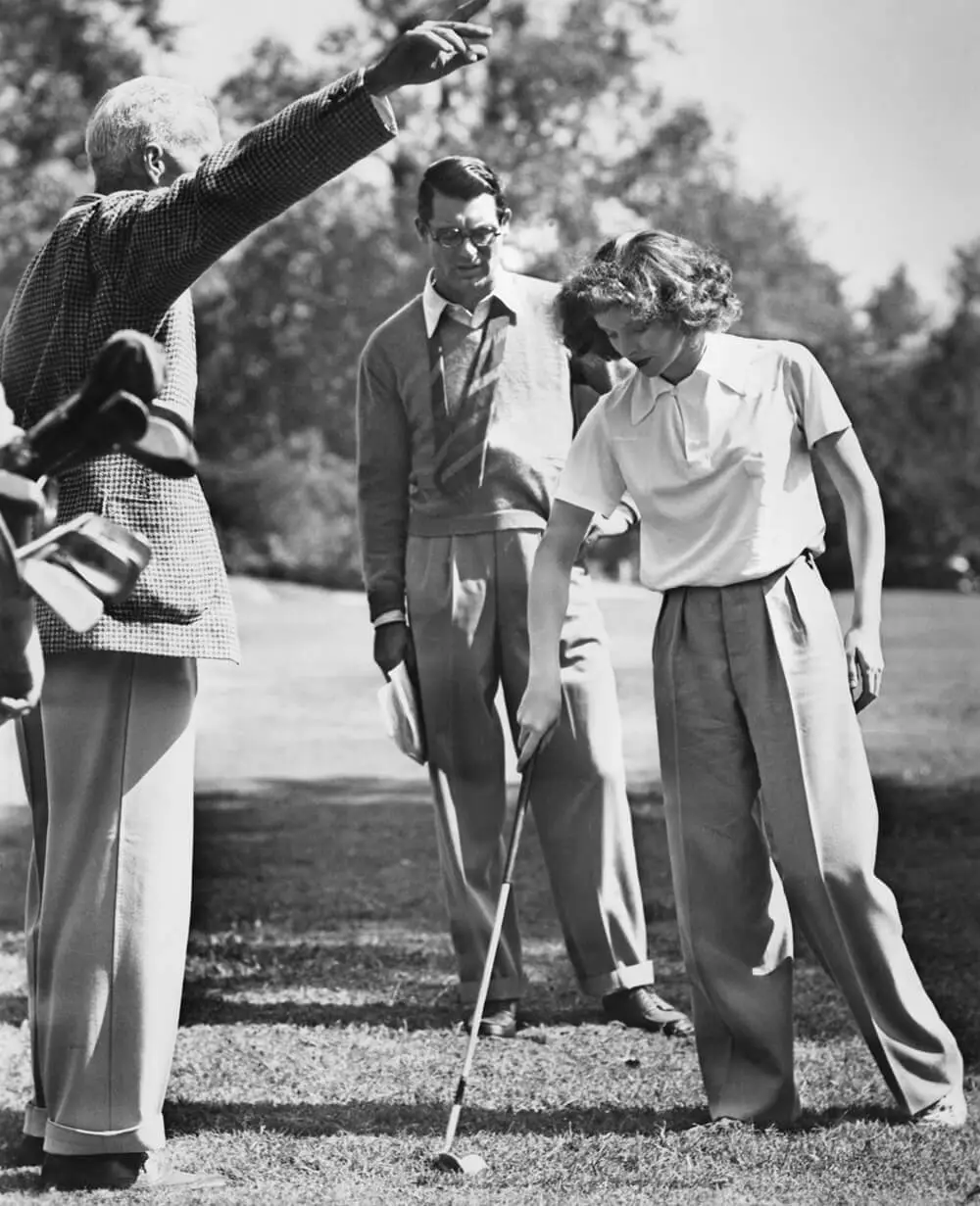
Fenwick’s Old World appeal is obvious. It’s flat, easily walkable even with five (very quiet) street crossings, and possesses an undeniably linksy feel, with coastal breezes a reliable companion. It plays bouncy, with small greens. Highlights include the par-four opener, where an overly faded approach might strike St. Mary’s-by-the-Sea, a charming, wooden, non-denominational church that dates to 1886. A sizable pond graces the right side of the par-three 2nd hole. Visible further to the right is a handsome house that overlooks the beach and Long Island Sound—the house where Hepburn and her family had lived. Two lighthouses are in view from the tee at the par-three 3rd hole, while the back tee at the 4th—added in the 1970s—delivers a pulse-quickening tee shot over both South Cove and Sequassen Avenue. No wonder Kate loved this place.
Bulkeley explained that three holes at Fenwick date to 1894, making it the second-oldest course in Connecticut. Other holes joined the circuit in 1895 and 1896. In 1942, the Bulkeley and Brainard families deeded the land to the borough as a park and Fenwick became a public course, as it is today—the state’s oldest. He informed me that holes had been re-routed several generations before, so that prior to World War II, the hole I played as the 152-yard par-three 6th, its green protected in front by a low grass berm and by bunkers left and right, had been the closing hole. That factoid resonated with me.
Revival
Sailing, swatting golf and tennis balls, gabbing with loved ones, Hepburn spent the summer of 1938 replenishing her soul at the family home in Fenwick. Late in the season, her friend, playwright Philip Barry, arrived from Maine around teatime. He presented her with a treatment for a play to be called The Philadelphia Story.
A few weeks later, Barry sent her a draft of the first act. Hepburn was thrilled. On September 20, she excitedly called Hughes, who told her, “Buy the film rights before you open.” Hughes did it himself, purchasing the movie rights to The Philadelphia Story, intending it to be a starring vehicle for his girlfriend.
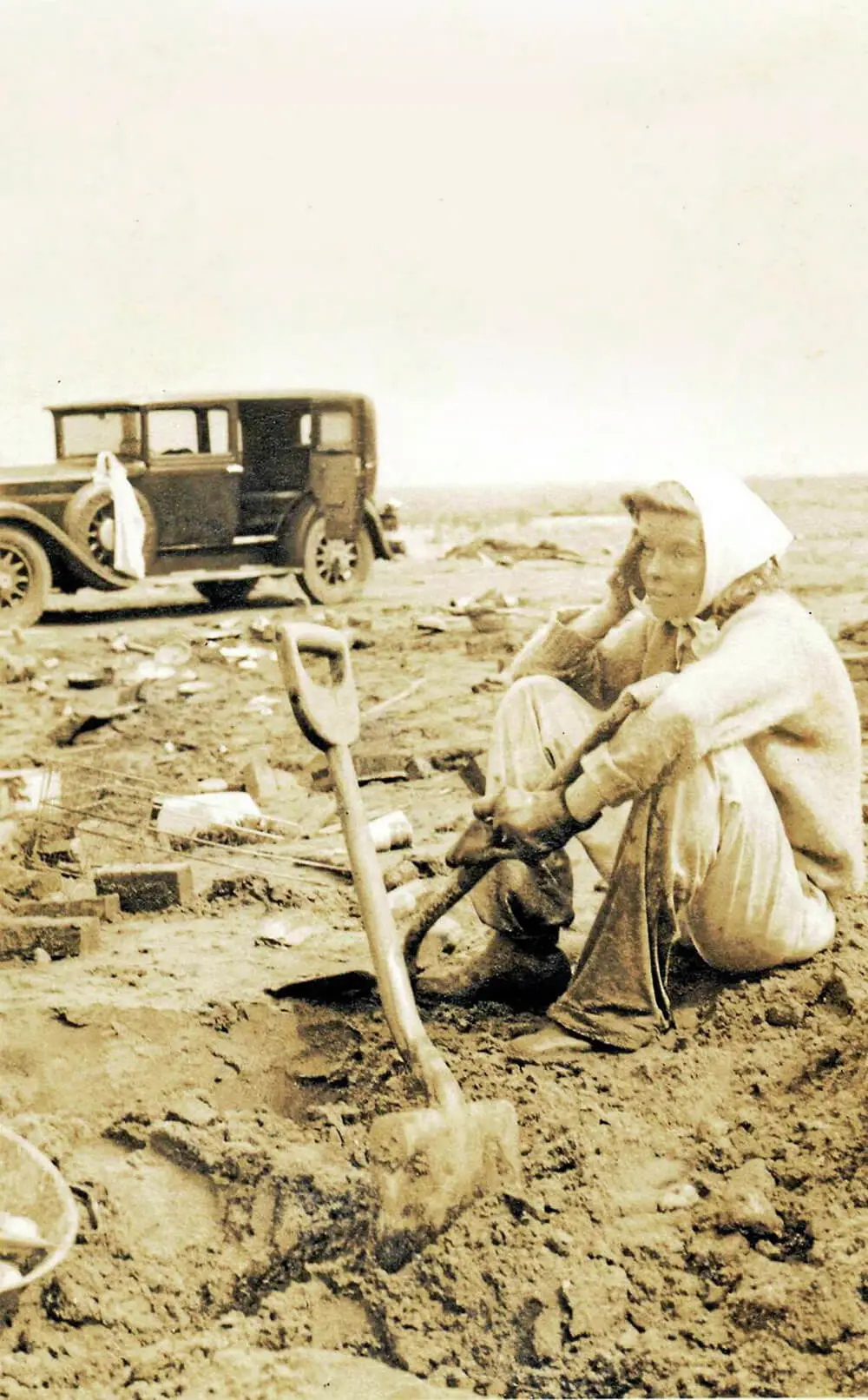
After four rainy days, Wednesday, September 21, dawned calm and clear. “I remember going for my swim at about 8 a.m.,” Hepburn wrote. “I went back in—had breakfast. Went outside. A steady wind was blowing now, but it was very pleasant.
“Out we went to play golf, Jack (“Red”) Hammond and I. By then I noticed that the wind had become quite strong. On the par three ninth [today’s 6th], I made a very good drive, high and it looked as if it had dropped right on the green. When we got there, we didn’t see the ball. Where was it? I was sure—Oh, my golly—look! In the hole—I got a hole in one. Can you imagine? That meant thirty-one on the nine holes. Certainly it was my record. We went home delighted. Let’s take a swim.
“We jumped the waves—Wow! What fun. We had a time holding ourselves upright. The water was lovely and we stayed in quite a while. When we got out and got dressed, we realized that the atmosphere was really strong and getting stronger. The sand was beginning to blow. It stung as it hit us…
“After that second swim we began to realize that we were in for something special.
“All of a sudden a car was flying through the air. It had been picked up by the wind and landed in the lagoon. WHAT GOES ON!
“Then there was a rip and a crash and the big laundry wing fell off the back of the house. My brother Dick finally persuaded us that it was time to leave. Looking back at the house (about fifteen minutes after we left it), we saw the house just sail away—easy as pie—and soon there was nothing at all left on the spot where the house had stood for over sixty years. Our house—ours for twenty-five years—all our possessions—just gone.
“…Morning. Red and I awoke at dawn and went forth…There was nothing on our property…Just a bathtub at a cockeyed angle and a toilet.

“We began to dig. And, believe it or not, we actually dug up eighty-five pieces of flat silver and the entire tea service. Then we got some blocks and began to design our present house—built on the same location.”
The surprise Category 3 hurricane proved only a temporary setback. The new Hepburn family compound emerged soon thereafter. The Philadelphia Story, starring Hepburn, was a Broadway smash in 1939 and a 1940 hit film, which also starred Jimmy Stewart and Cary Grant. Those triumphs vaulted Hepburn into the stratosphere. She made nine successful pictures with Spencer Tracy over a 25-year period, scored more glory in 1951 for The African Queen with Humphrey Bogart, and ultimately won a record four Academy Awards for Best Actress.
In between gigs, she inevitably returned to Fenwick. For the last seven years of her life, it was her full-time home. She died in the rebuilt Fenwick house in 2003 at age 96. In 1991, Hepburn said of Fenwick, “To me it is paradise. I was and am nothing special here. I’ve been here since I was six.”
Thank you for supporting our journalism. If you prefer to read in print, you can also find this article in the Winter 2024 issue of LINKS Magazine. Click here for more information.



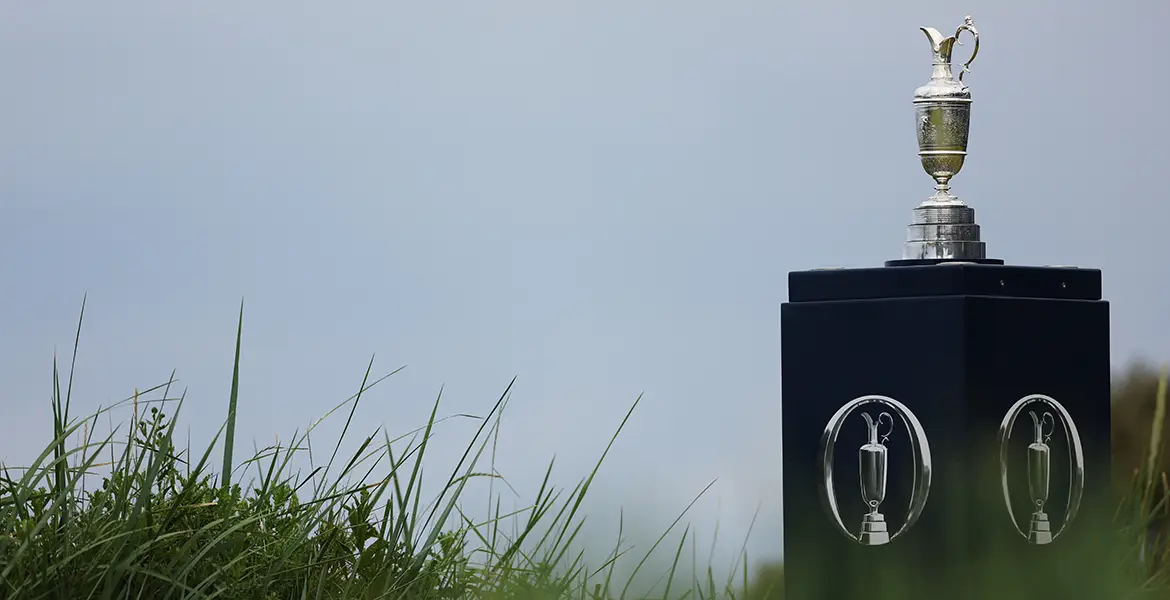



An AMerican treasure was Kate.
An AMerican treasure was Kate.